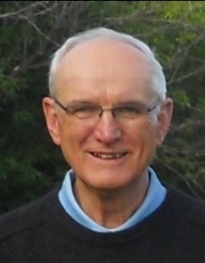
Neil Roy AM MBBS FRACP
Early years
Neil was born in Scotland, raised in primary school years in England, with secondary and tertiary (Melbourne Uni.) education in Melbourne.
Following graduation in ’65 and 2 years residency at The Alfred he was set for general practice when the Gorton government’s introduction of ‘The Most Common Fee’ turned many of that year away from a GP career, and he decided to pursue a career in paediatrics. Following a year at Fairfield hospital he spent the next 4 years at the RCH including Chief RMO in 1972.
Post-grad training and appointments
Wishing to be a general paediatrician he went to Toronto for a year to learn more about neonates. While there an opening occurred at the Children’s in the Neonatal Unit. Hence his initial journey to general practice changed to the most sub-specialised field one could imagine.
After a further year of neonatal training at McMaster University Medical Centre in Hamilton under the mentorship of the legendary Prof. Jack Sinclair he returned to Melbourne in 1975 to the Children’s and part time at The Women’s. The next year he was appointed as the Director of the new neonatal transport service, and in 1977 his sessions at The Women’s and transport director were consolidated into a full-time position, so he left the RCH.
NETS and Regional Organisation
The establishment of NETS (Newborn Emergency Transport Service) was the highlight of his career. The service provided an ever-increasingly sophisticated intensive care statewide ‘flying squad’ for sick babies, which had a major impact on the way that maternity services were provided in the state, with the introduction of the concept of regionalisation. NETS set up an outreach education system, taking neonatal and obstetric teaching seminars throughout the state to all health professionals, and produced a booklet on simple emergency management of babies, which over the years had several editions and eventually morphed into the electronic Neonatal Handbook today on the DHS website, used nationally.
As neonatal medicine progressed, the increased survival rate of tiny prems put huge pressures on intensive care availability and as a result he became the public face of the frequent negotiations with government to provide more beds and facilities. Who can forget the headlines about sending babies interstate?
Women’s and Children’s Network
His career continued as an intensive care specialist at The Women’s, becoming Director of Neonatal Services in 1995 at the time that The Women’s combined with the Children’s, and so he returned to the RCH, becoming Divisional Director of both neonatal units, as well as both Biomedical Engineering Services; a huge job across 2 campuses, and still Director of NETS, from which he finally resigned in 1999 after 23 years.
The Women’s and Children’s split again in 2004; the biggest achievement in this time was the appointment of a Professor of Neonatal Research, based mainly at The Women’s. Under the leadership of Colin Morley from Cambridge, The Women’s neonatal research team rapidly grew to international prominence and has continued to be a world leader. While not being a researcher himself, Neil was gratified to have facilitated this.
Neonatal Services Reviews
Nationally he conducted reviews of neonatal services in every mainland state except Queensland as well as the North Island of New Zealand. He was on the State Transport Advisory Committee 1976-99, the State Neonatal Services Advisory Committee from 2000-2007 and was a member of Australian and New Zealand Neonatal Network Advisory Committee 1994-2007.
Neonatal Unit Design
Towards the end of his career The Women’s planned a new hospital and he took up an interest in neonatal unit design and co-authored the original guidelines for neonatal unit design for Australia and New Zealand, which now form the basis of the design guidelines on the DHS Vic website.
Having hoped to see the neonatal unit move into the new hospital, time caught up and he retired in 2007, a year before the move; but his successor, Carl Kuschel from Auckland, had been the co-author of the design guidelines and had moved his Auckland unit, so all went well.
Retirement
In retirement he worked with the DHS as Adviser to neonatal services for 4 years and has maintained an interest in the history of baby care, especially at The Women’s. He received an AM in 2015 for his neonatal transport work, although he claims he was just doing a job he loved. He still plays golf twice a week, swims 3 times a week and sings in 2 choirs, the latter activity being a life-long love and weekly therapy.
He has been married twice - to Robyn in 1965 and to Elizabeth Carse in 1986. He has 2 children from the first marriage, both lawyers. With Elizabeth he has a daughter, who in recent years has worked with our indigenous community and now working on policy to assist them. He has 4 grandchildren.